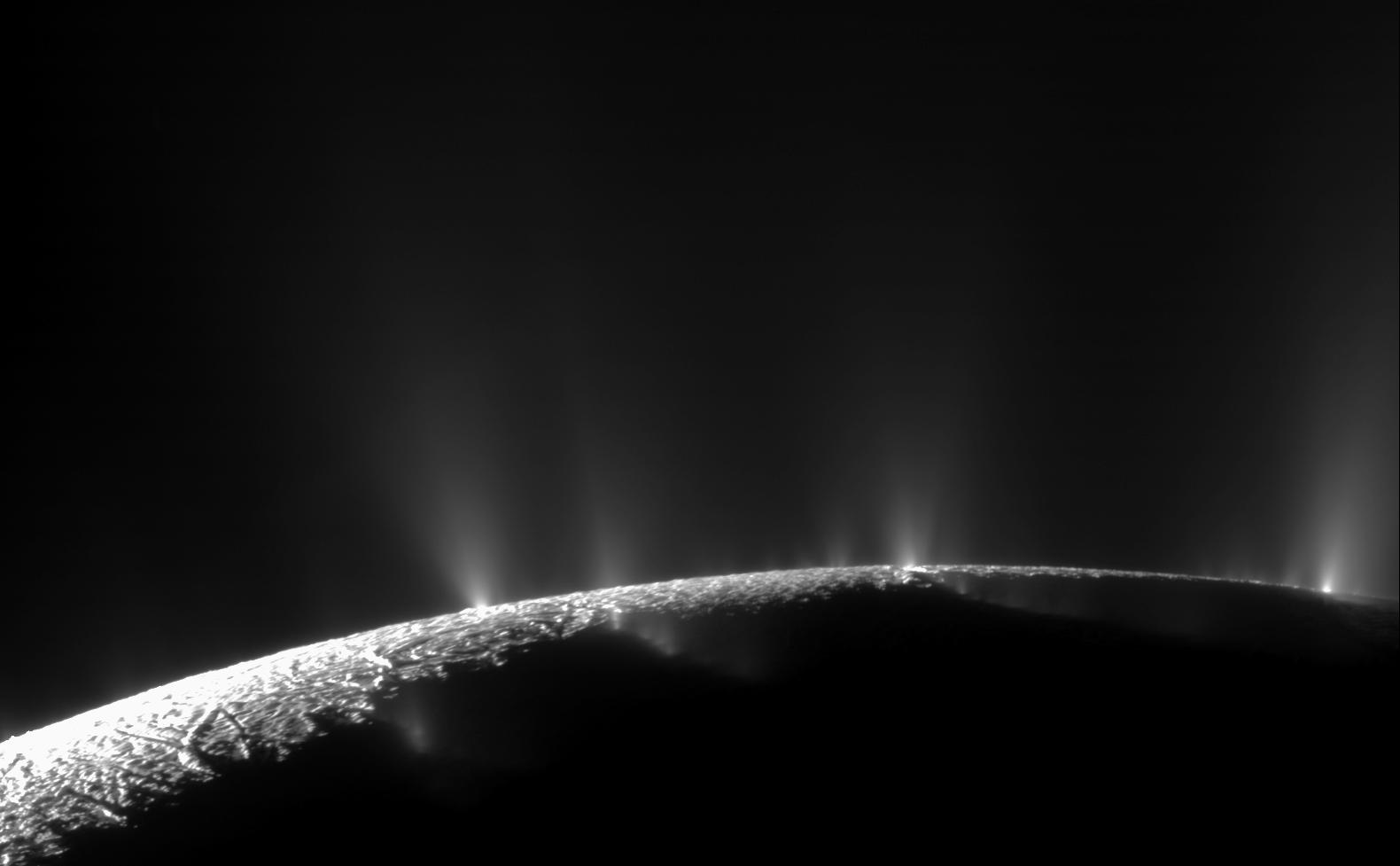4 min read
The spacecraft continues to be in an excellent state of health with all of its subsystems operating normally except for the instrument issues described at http://saturn.jpl.nasa.gov/news/significantevents/anomalies .
Commands stored on board Cassini in the S91 sequence controlled most of the spacecraft's activities this week. Meanwhile on Earth, Sequence Implementation Team members in the US, in Germany, and in the UK, continued their work on creating additional 10-week command sequences. S92 will take over on Nov. 25; sequence S93 is planned to begin executing on Feb. 7, and S94 starts on April 18. Seven more, and then Cassini's final command sequence S101 is planned to begin operating on July 10, 2017.
A recently released video offers a remarkable series of images of Saturn's small but active moon Enceladus. They were taken over a period of 6.5 hours, and show the changing geometry as well as the changing plume dynamics: /resources/10779 .
.
Wednesday, Nov. 4 (DOY 308)
Cassini's Imaging Science Subsystem (ISS) conducted an observation of Saturn's irregular moon Hati for 6.6 hours, and then Ijiraq for 14.1 hours. Hati, whose name honors a giant wolf in Norse mythology, has a diameter of about six km; it occupies a retrograde, inclined orbit that reaches as far as 27.2 million kilometers from Saturn. It rotates more rapidly than any other object observed in the Saturn system, with a period of only 5.5 hours. Ijiraq, which Cassini last observed just over a year ago, is very dark-surfaced object about 10 kilometers in diameter; it orbits Saturn in a highly inclined, highly elliptical path that reaches more than 14.6 million km out. It was named after a shadowy creature of Inuit legend.
Cassini coasted through apoapsis during the Ijiraq observation, marking the start of the spacecraft's Saturn orbit #225. It had gradually slowed to 6,130 km per hour relative to the planet, and reached a height of 2.05 million km.
Late in the day, the S91 command sequence reached a planned pause while freshly prepared commands arrived from Earth. In response, the spacecraft turned and fired its small rocket thrusters to carry out Orbit Trim Maneuver (OTM)-429. The 112-second hydrazine burn provided the needed change in velocity of 109 millimeters per second, for targeting to the Titan T-114 flyby coming up this Friday, Nov. 13.
Thursday, Nov. 5 (DOY 309)
The Ultraviolet Imaging Spectrograph (UVIS) made a 14.75-hour Saturn auroral observation, looking at the illuminated north pole. The Composite Infrared Spectrometer (CIRS) and the Visible and Infrared Mapping Spectrometer (VIMS) rode along making their own observations while CIRS controlled the spacecraft's pointing.
Friday, Nov. 6 (DOY 310)
UVIS made two more Saturn auroral slewing observations totaling nearly 21 hours, looking at the north pole again with CIRS and VIMS both riding along.
Saturday, Nov. 7 (DOY 311)
UVIS began a 13.75-hour observation of Saturn in the extreme- and far-ultraviolet part of the spectrum, forming spectral images across Saturn's illuminated hemisphere. ISS and CIRS were riders. The viewing geometry for this period is illustrated here: https://space.jpl.nasa.gov/cgi-bin/wspace?tbody=699&vbody=-82&month=11&day=7&year=2015&hour=23&minute=55&fovmul=1&rfov=10&bfov=30&showsc=1&showac=1 .
Sunday, Nov. 8 (DOY 312)
CIRS began observing one spot on Saturn, gathering high-quality spectra for 21.25 hours to determine composition.
Starting today, Cassini scientists supported the 47th annual DPS meeting, the Division for Planetary Sciences of the American Astronomical Society. The week-long meeting was held in National Harbor, Maryland.
Monday, Nov. 9 (DOY 313)
There was an opportunity to perform another OTM today, on the approach to Titan. The Navigation team's orbit-determination solutions were showing Cassini to be satisfactorily close to its planned trajectory, though, so OTM-430 was cancelled.
Saturn's tiny moon Epimetheus is featured in an image released today, with dark rings in the background:
/resources/16271 .
Tuesday, Nov. 10 (DOY 314)
Cassini's Magnetospheric Imaging Instrument (MIMI) had the spacecraft roll about its longitudinal axis for 11.5 hours today, collecting data about Saturn's inner magnetosphere. Finally, CDA observed for 3.4 hours while crossing the equatorial ring plane of Saturn.
During the week, the Deep Space Network communicated with and tracked Cassini on nine occasions, using stations in Australia and California. A total of 149 individual commands were uplinked, and about 1,586 megabytes of telemetry data were downlinked and captured at rates as high as 110,601 bits per second.
This illustration shows Cassini's position on Nov. 11: http://go.nasa.gov/1jOsVVZ . The format shows Cassini's path over most of its current orbit up to today; looking down from the north, all depicted objects (except the background stars of course) revolve counter-clockwise, including Saturn along its orange-colored orbit of the Sun.







